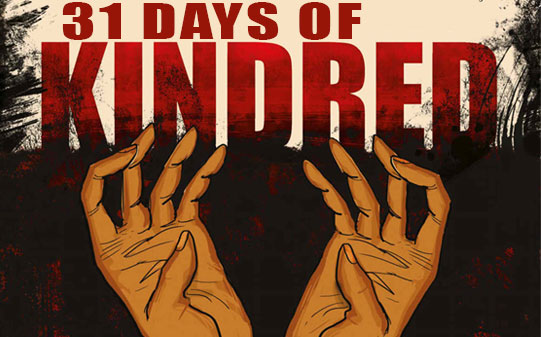The graphic novel adaptation of Octavia E. Butler’s Kindred that I wrote/lettered and John Jennings drew will be released by Abrams ComicArts on January 10, 2017 (available for pre-order now). In recognition of that momentous occasion, I’m writing 31 blog posts about the path from novel to graphic novel. This is 31 Days Of Kindred.
* * *
Day 26
A New Audience
* * *
So the graphic novel is now 6 days away from going on sale, and it’s started getting some kind reviews, most recently from Swapna Krishna at Book Riot, which is awesome. And I think every review I’ve seen has mentioned the prospect of bringing Kindred to a new audience.
This is something that I don’t think I’ve ever been able to really wrap my mind around.
I mean, rationally, sure, I understand. A graphic novel version is as likely to bring in people who have no experience reading Octavia Butler as it is to appeal to Butler fans.
But I am continually surprised how few people have read Kindred. You’d think I’d be over it by now, but I’m really not. If ever there was a “great American novel,” this is it. But I’ve had friends who are huge into sci-fi, into time travel, into critical race and gender stuff, and they’ve never heard of or never read Kindred. Every time I meet someone who is familiar with Butler, I kind of want to give them a hug. Like, I thought it was just me who knew this was amazing.
It’s strange that Butler seems to be simultaneously very well know, especially in high school and college English or literature courses, or in feminist and/or African American nerd fandoms, but at the same time is felt to be underappreciated or overlooked. This is especially tangible in discussions of the moving kind of visual adaptations of Butler.
I’ve read a few articles that have wondered why Butler’s work hasn’t been adapted for film or television, with the criticism that this lack of pop culture industry interest is endemic of the lack of diverse voices producing entertainment (see, also, the #OscarsSoWhite discussion). This Shadow and Act article even mentions the graphic novel as a good stepping stone to a Kindred movie:
“So if you’re one of those hoping for filmed version of “Kindred,” a graphic novel adaptation to start is a step in the *right* direction, if only because, as reps for her estate said above, the work might become more accessible to the young audiences that Hollywood studio production decisions target most often – especially where the more expensive movies are concerned.”
The part of me that spells comics “comix” bristles at these discussions of the sequential art medium as a stepping stone to Hollywood, because it feels dismissive of my beloved art form, but realistically, pragmatically, sure. I get that. Graphic novels have acquired a certain level of “cool” in the general (American) popular cultural zeitgeist. And having a prose work adapted into visual form carries with it a certain kind of cultural canonization that people who discuss these things have found lacking for Ms. Butler’s writing.
If I sound a bit ambivalent about these discussions, I sort of am. Don’t misunderstand: I love the idea of the graphic novel bringing new eyes to Butler’s work. I consider part of my work on this project to be that of a cultural activist; a Butler activist, I guess. I hope everyone who reads the graphic novel goes back and reads the novel. I would hope that a movie would have the same effect. (And, I mean, it would, clearly.)
But I’m a bit resistant to the idea that a movie adaptation, or a graphic novel adaptation for that matter, somehow legitimizes or improves upon the brilliant prose from which these works originate. Adaptations offer a different experience, but hopefully the soul of the story connects.

